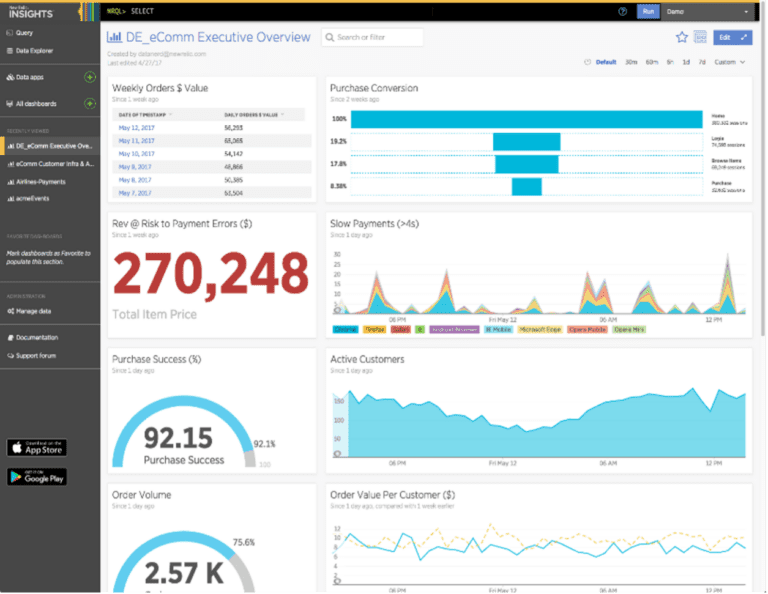Top Technology Trends for IBM i Professionals: Part V
The good news is that all of us who have avoided modernizing our IBM i green screens until now may have dodged that bullet. We might be able to avoid screen modernization altogether. The days of filling in fixed forms to share data, whether between individual customers and businesses or business to business, may soon be coming to an end.
LLM-based chatbots are replacing those forms by extracting the required information from a text-based conversation rather than requiring form completion. Our computers and mobile devices store our contact, financial information, credit cards, and other personal information in a way that allows us to share it with whomever we choose (and, if we are not careful with security, even with people we don’t choose). We no longer need to fill in a form to buy from anyone who supplies something we want or need. We simply ask the device to send the necessary information to them. If I want to buy something like new clothes, I no longer need to navigate through screens asking me if I am looking for shoes, suits, or dresses, what my size is, and whether I need men’s or women’s clothing. I can either tell the virtual salesperson what I am looking for (just another chatbot) or upload my preferences and ask to see options.
These advancements are having an equally transformational impact on business-to-business transactions. Predictive AI can replenish inventory, guide manufacturing volumes, manage cash, and optimize transportation assets without human intervention. Healthcare companies can proactively schedule appointments for their patients using chat rather than forms. Most trucking companies have already adopted onboard devices that track everything from the truck’s location, equipment status, speed, and driving patterns to trailer openings and closings, delivery/pickup dates and times, and more. Route drivers will no longer need to enter the products and quantities they delivered or sold off the truck through a UI; that information will be automatically tracked with technology like RFID tags and sent to the IBM i application. Customers can accept orders through their scanning technology, and the systems will ensure that the totals match.
There are fewer and fewer cases that require a traditional data entry screen– green screen, web, mobile, or otherwise. Instead, companies will need APIs, integration endpoints, and data publishing systems to import and export data. Of course, there is a scary side to this. This transition away from traditional data entry means that there will be a great deal of data about each of us stored in a variety of locations. So, security will continue to be a significant requirement (and challenge – a topic for another post).
The great news is that IBM i is well positioned to participate in this new world. Its legendary reliability, security, and high-speed transaction processing play well in this environment. Most IBM i shops have proven applications that are highly customized to their business needs. The biggest obstacle is creating the API-based integration infrastructure around existing IBM i applications that were built decades before this new technology arrived.
That is where generative AI can help. Generative AI can quickly build integration layers with complex business logic that can translate data from these new sources into data that the IBM i can absorb. It can also generate the RPG or COBOL code that will allow existing IBM i applications to talk with APIs provided by other companies and applications. In addition, generative AI can help with the gnarly problem of restructuring large, monolithic IBM i applications into more flexible, modular applications.
The executives who need to monitor the business and want to be alerted to significant events can use new, customizable visual dashboard systems. Rather than running text-based queries, they can see their data graphically using widgets. They can configure these systems to alert them to trends or unusual occurrences.

The best news is that all of this can be done incrementally—it does not require a big-bang approach. Companies can add APIs and other integration technologies as needed. I have been pleasantly surprised by the number of IBM i shops I am currently working with that recognize the opportunities to grow their businesses using these new technologies.
If you would like to learn more about how to accelerate your efforts to modernize your IBM i applications securely using these new technologies, reach out to us at www.eradani.com or info@eradani.com. We love talking about this stuff!

Dan has spent over thirty years leading companies that help customers implement new technologies in legacy environments. Previously, Dan led worldwide software development groups that built highly successful modernization and DevOps tools and was the CEO of Aldon, the leading provider of DevOps tools to the IBM i marketplace. To learn more about Eradani’s offerings, reach out to us today!

